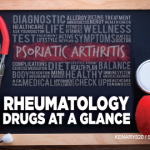Other factors: Generally, intravenous drugs used to treat infections, cancer, rheumatic conditions and immunologic disease were disproportionately represented, compared with other agents reported as leading to anaphylaxis, the researchers write. Rituximab and infliximab, which were among the top anaphylaxis-causing monoclonal antibodies in the study, are reported to contain alpha-gal allergen. Galactose-alpha-1,3-galactose (alpha-gal) is a carbohydrate found in mammalian cells and alone can lead to anaphylaxis.3 These monoclonal antibodies were also associated with a higher proportion of anaphylaxis followed by death.1
The researchers also note that infliximab and rituximab contain polysorbate 80, an inactive ingredient that has been implicated as an allergen causing anaphylaxis and non-IgE-mediated mast cell activation in some patients. It’s unknown whether the reaction is due to the drug or the carrier(s).
Limitations
One important limitation of this study is that FAERS is a voluntary database of adverse events. Thus, not all information or every reaction is reported.
Additionally, monoclonal antibodies are administered under stricter supervision than other treatments because of their high cost and usually their non-oral administration routes as specialty pharmaceuticals. This closer drug administration, witnessed directly by clinicians, may explain the higher rate of adverse event reporting of anaphylactic reactions for these treatments.
Another major limitation of the self-reported, voluntary FAERS data is its lack of denominator data and high risk of selection and reporting bias. These data should not be used to estimate the true incidence of general anaphylaxis or anaphylaxis followed by death for these drugs. Ethnicity data, which helps determine genetic contributors, is also lacking. However, the FAERS data can be used to identify themes and trends in anaphylaxis and guide the medical community in determining what types of testing strategies are most relevant for patient care.
Overall, this study of the FAERS database identified antibiotics as being highly reported for anaphylaxis and anaphylaxis followed by death. The study also identified an emerging trend in reports of anaphylaxis due to monoclonal antibody therapies. It’s important to make note of the agents that lead to anaphylaxis so that we, as clinicians, can remain vigilant and monitor our patients for potential reactions.
Michele B. Kaufman, PharmD, BCGP, is a freelance medical writer based in New York City and a pharmacist at New York Presbyterian Lower Manhattan Hospital.
References
- Yu RJ, Krantz MS, Phillips EJ, et al. Emerging causes of drug-induced anaphylaxis: A review of anaphylaxis-associated reports in the FDA Adverse Event Reporting System (FAERS). J Allergy Clin Immunol Pract. 2021 Feb;9(2):819–829.e2. Epub 2020 Sep 28.
- U.S. Food & Drug Administration. Questions and answers on FDA’s Adverse Event Reporting System (FAERS). 2018 Jun 4.
- Watson K. Alpha-gal allergy. Healthline Media. 2019 Jan 30.



